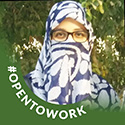Overview
Sever's disease, often referred to as calcaneal apophysitis, is a prevalent ailment in children or youthful athletes, especially those engaged in regular physical activities. This condition is marked by swelling and discomfort in the growth plate of the heel bone, termed the calcaneal apophysis.
Causes of Sever's disease
Several factors can contribute to the development of Sever's disease among children.1 The exact mechanism behind the injury is still not fully understood, but one of the primary causes is repetitive stress on the heel bone and its growth plate. This stress can result from various high-impact physical activities, such as running, jumping, or playing sports that involve sudden stops and starts.
Another contributing factor is tight calf muscles, which can pull on the Achilles tendon (also known as the heel cord) and cause tension on the growth plate. Additionally, an injury to the heel can also lead to Sever's disease.
Signs and symptoms of Sever's disease
The most common symptom of Sever's disease is heel pain, which can be felt in one or both heels. The pain is often worse during or after physical activity and may improve with rest. Other symptoms of Sever’s disease may include:
- Swelling and tenderness in the heel area
- Difficulty in walking or running, and a limp
- Redness or irritation in one or both heels
In extreme cases, the pain can be so acute that it disrupts daily tasks and may lead your child to refrain from participating in physical activities entirely.
Management and treatment for Sever's disease
The management and treatment of Sever's disease aim to reduce pain and inflammation and promote healing. The first step is to rest the affected foot and avoid any physical activity or exercise that may aggravate the condition. Other options may include ice therapy which can also help reduce pain and swelling. Applying ice to the affected area for 15-20 minutes at a time, several times a day can alleviate the injury.
Stretches to loosen tight calf muscles and exercises to strengthen the surrounding muscles can also be beneficial. Additionally, a heel cup or arch support insole can help cushion the heel and reduce pressure on the growth plate.
In some cases, your doctor may recommend anti-inflammatory medications, kinesiotherapy, orthoses (such as a brace or special insole), or seeing a physiotherapist to help manage the pain and promote healing of the overuse injury.2
Diagnosis of Sever's disease
The diagnosis of Sever's disease usually involves a physical examination and proper clinical investigation of the affected foot. Your doctor may also order imaging tests, such as an X-ray or MRI, to rule out other conditions and confirm the diagnosis.
FAQs
How can I prevent Sever's disease?
To prevent Sever's disease, it's essential to adopt measures that minimize the potential for injury and stress to the heel bone and its growth plate. Using the right footwear with adequate arch support and shock-absorbing qualities can lessen pressure on the heel. Moreover, engaging in stretching routines to relieve tight calf muscles and ensuring a proper warm-up before physical exertion can aid in avoiding injuries.
How common is Sever's disease?
Sever's disease is a relatively common yet underreported condition, particularly among growing children and young athletes. It is estimated to affect 1 in every 10 children who participate in physical exercise and activity. Typically, children between 8 to 15 years are mostly affected by Sever’s disease.3
Who is at risk of Sever's disease?
Sever's disease is most commonly seen in children between the ages of 8 and 14 years old, particularly those who participate in physical exercise and activity. Additionally, children with tight calf muscles or foot and ankle problems may be more at risk of developing the condition.
Fortunately, the condition usually resolves itself once the child is fully grown. This is because the growth plate becomes matured into a solid bone, so the heel and the tendons can withstand more force, which prevents its recurrence among young adults.
When should I see a doctor?
If your child is experiencing persistent heel pain or difficulty walking or running then it is recommended to see a doctor or other appropriate healthcare professional such as a physiotherapist. Early diagnosis, awareness of the symptoms, and adequate treatment can help prevent the condition from worsening and reduce the risk of long-term complications.
Summary
Sever's disease is a common condition that affects children worldwide. It is characterised by inflammation and pain in the growth plate of the heel bone, especially among physically active children. Tight calf muscles, repetitive stress on the heel bone, and injury are some of the primary causes of the condition. Symptoms may include heel pain, inflammation at the site area, swelling, and difficulty walking or running.
Fortunately, there are a number of treatment options including rest, ice therapy, stretching exercises, and heel cups or arch supports. Prevention involves taking steps to reduce the risk of injury and strain on the heel bone and growth plate. If your child is experiencing persistent heel pain or difficulty walking or running, it is recommended to see your healthcare provider.
References
- Smith JM, Varacallo M. Sever’s Disease [Internet]. Nih.gov. StatPearls Publishing; 2019. Available from: https://www.ncbi.nlm.nih.gov/books/NBK441928/
- Fares MY, Salhab HA, Khachfe HH, Fares J, Haidar R, Musharrafieh U. Sever’s Disease of the Pediatric Population: Clinical, Pathologic, and Therapeutic Considerations. Clinical Medicine & Research. 2021 Sep;19(3):132–7.
- Belikan P, Färber LC, Abel F, Nowak TE, Drees P, Mattyasovszky SG. Incidence of calcaneal apophysitis (Sever’s disease) and return-to-play in adolescent athletes of a German youth soccer academy: a retrospective study of 10 years. Journal of Orthopaedic Surgery and Research. 2022 Feb 9;17(1).

 Medical contributor:
Medical contributor: First revision:
First revision:  Second revision:
Second revision: 




